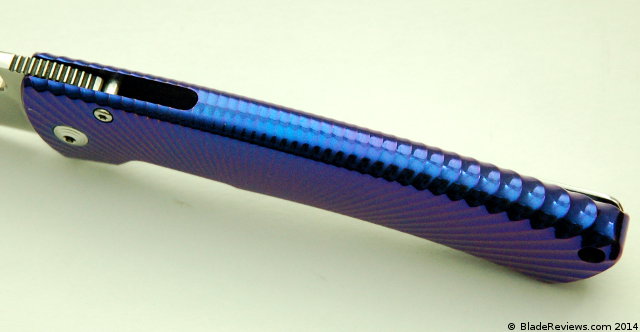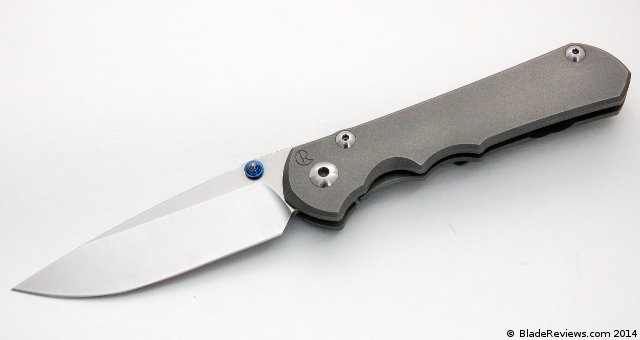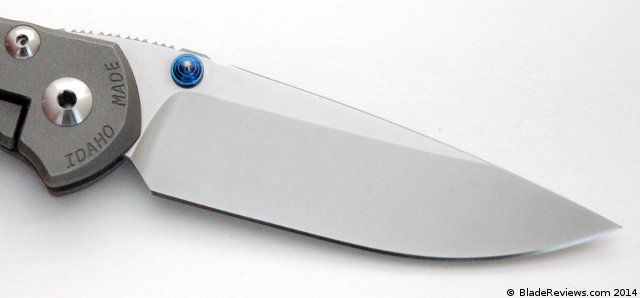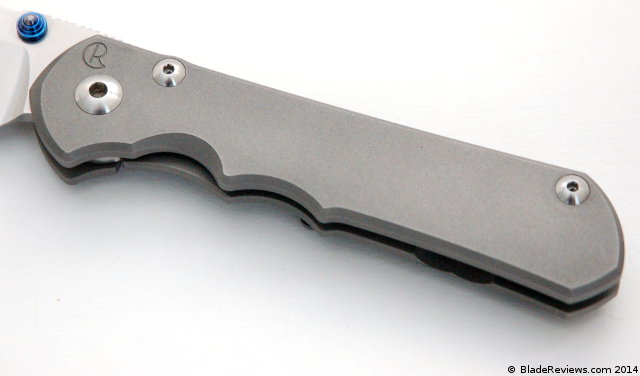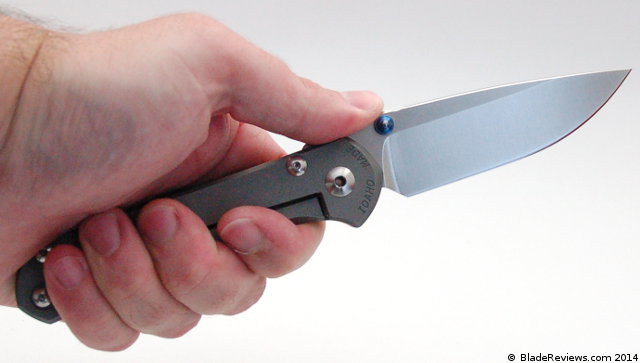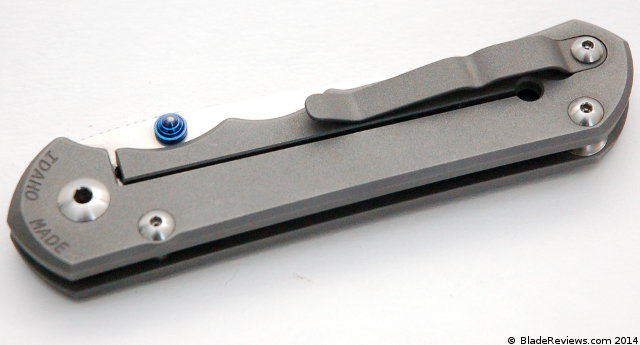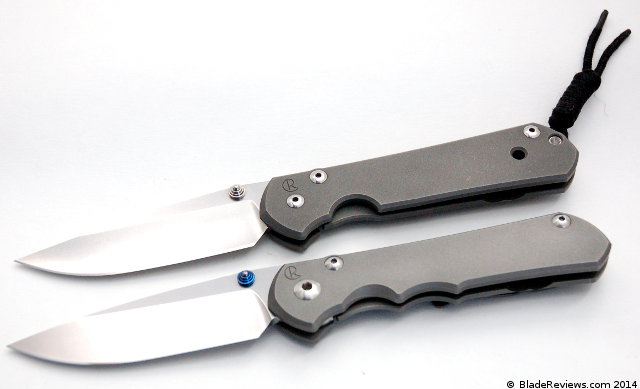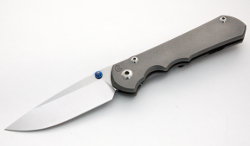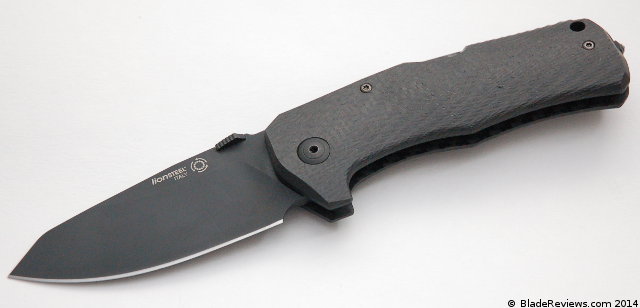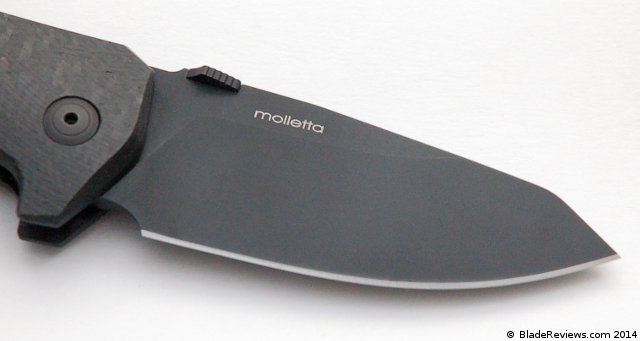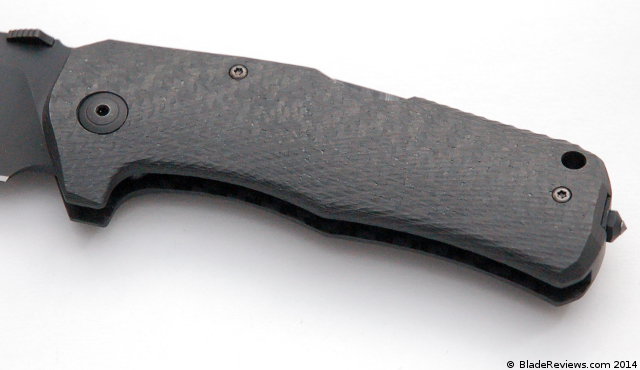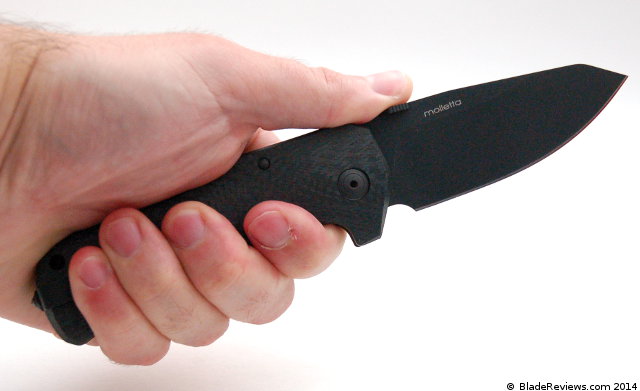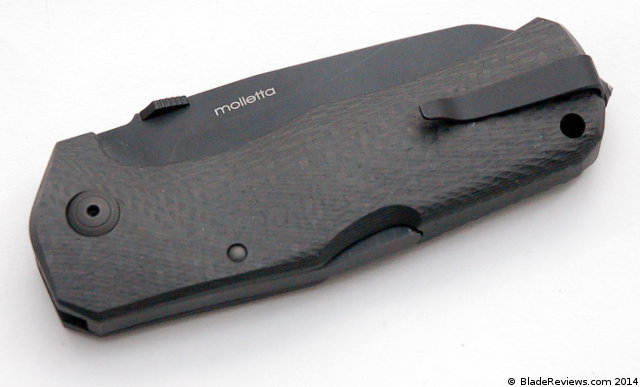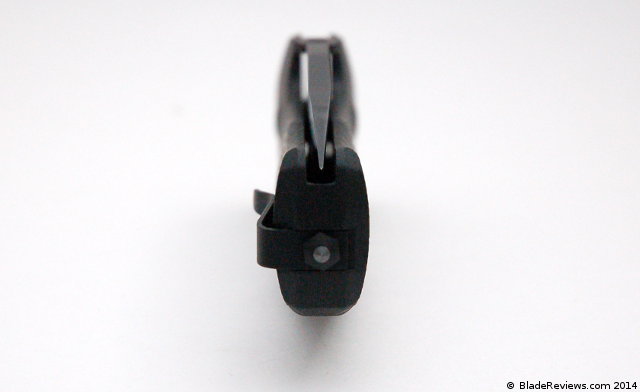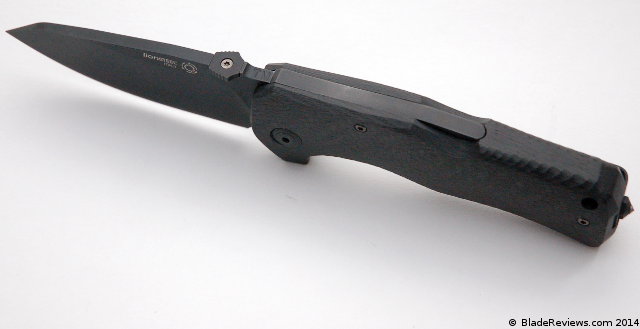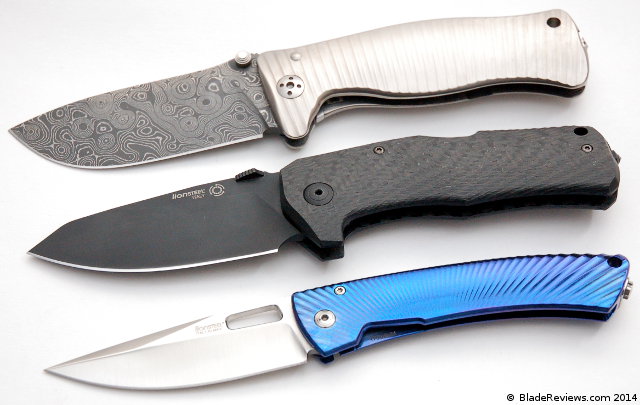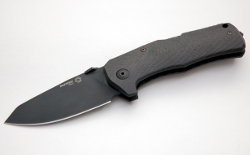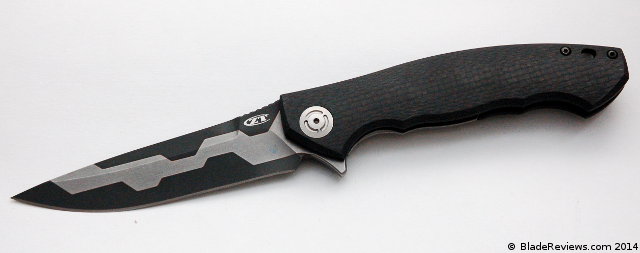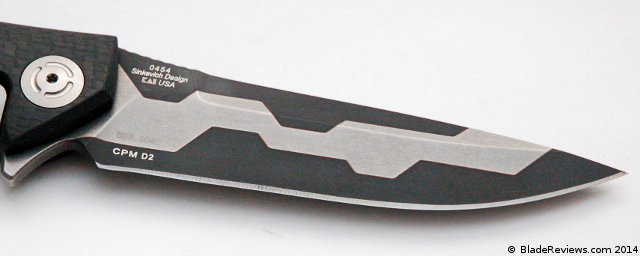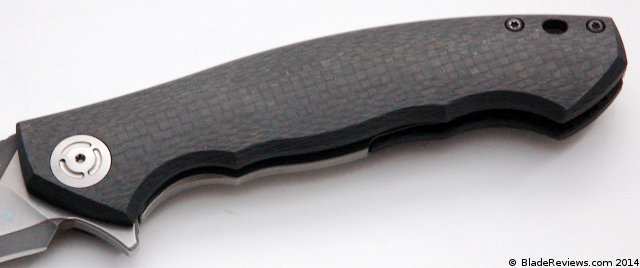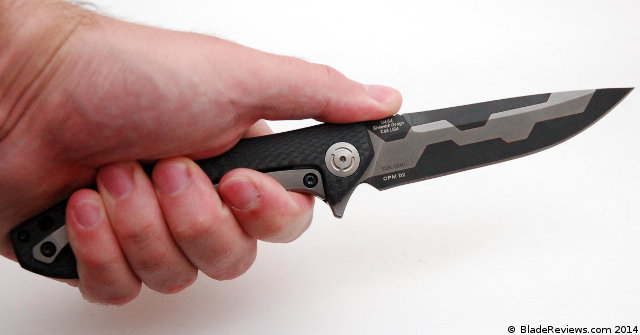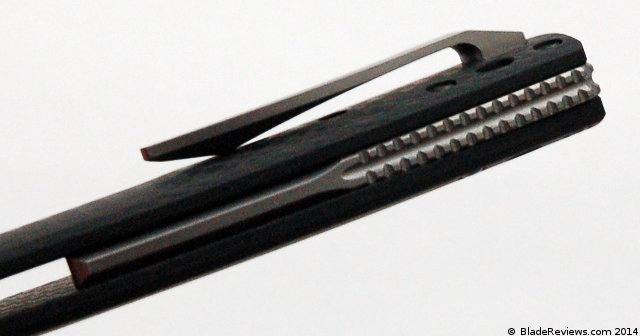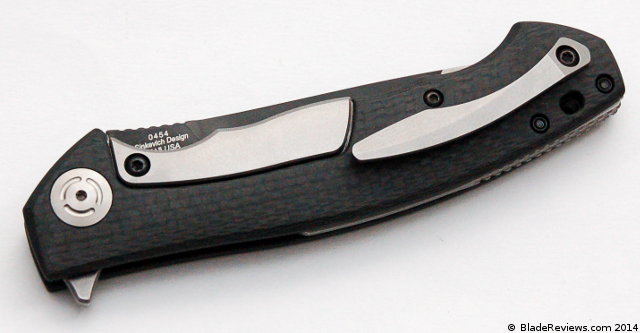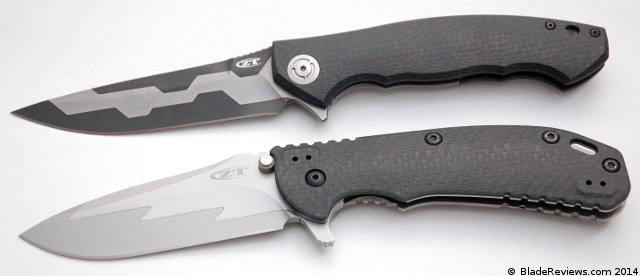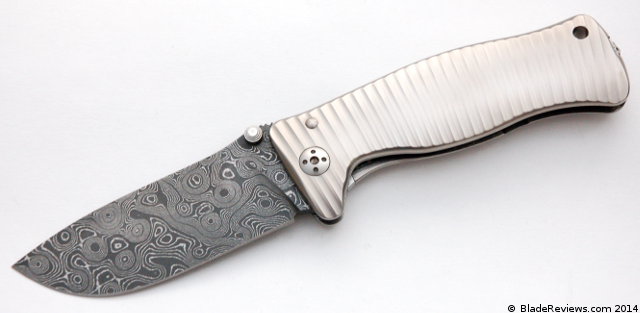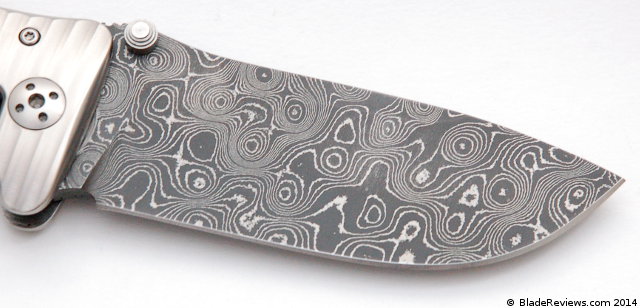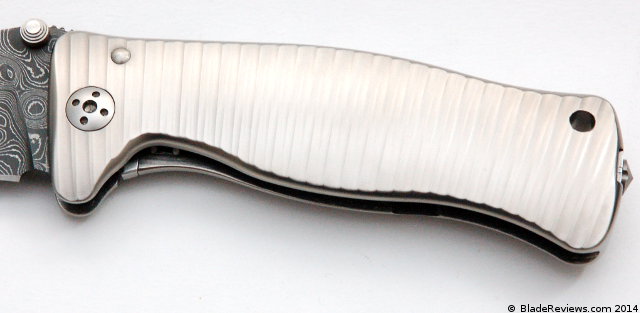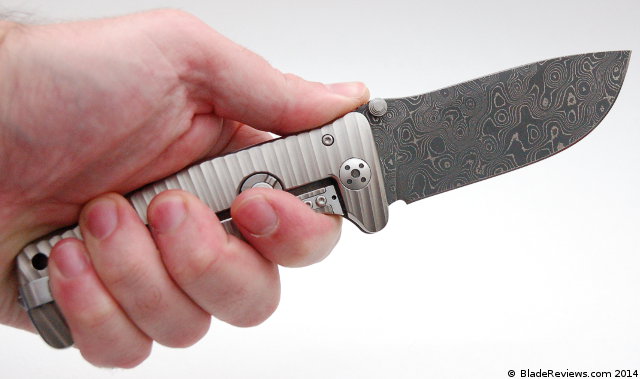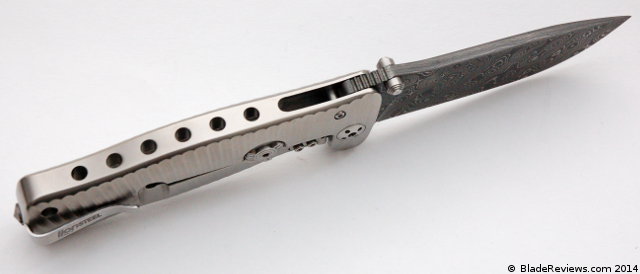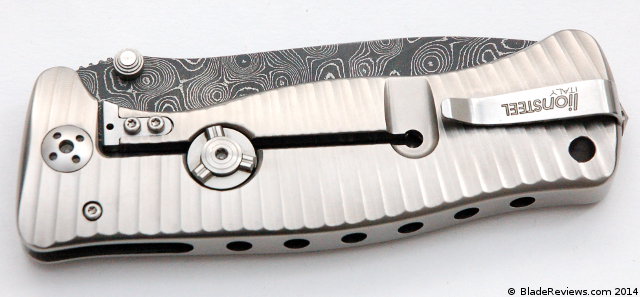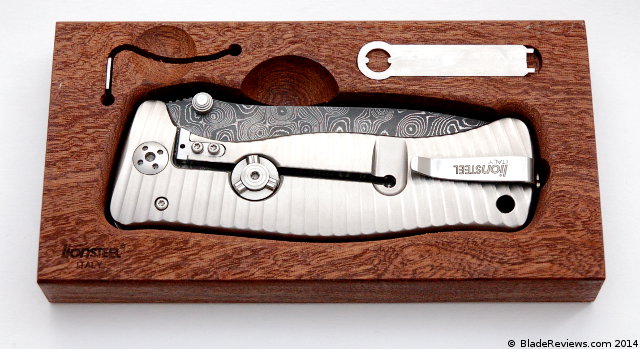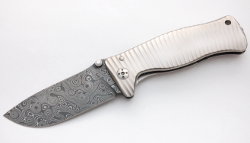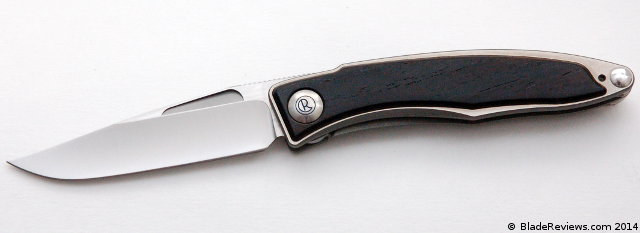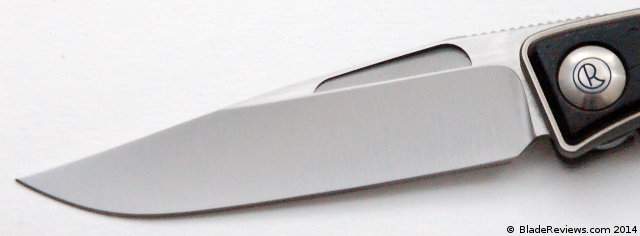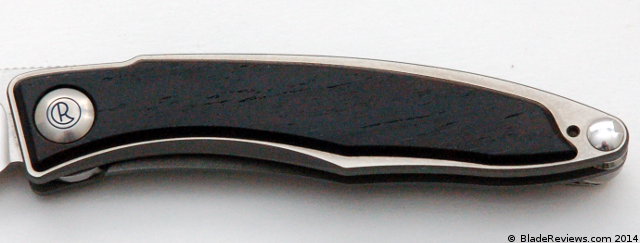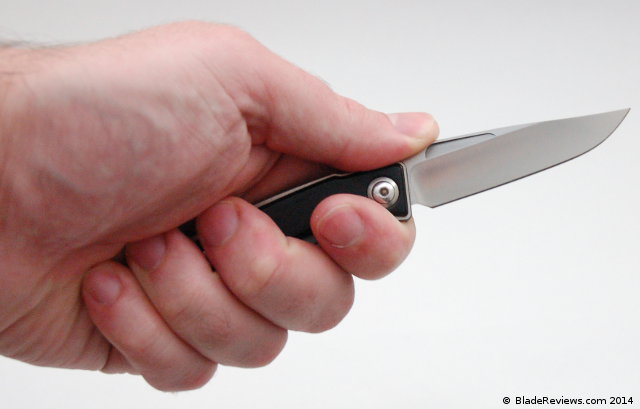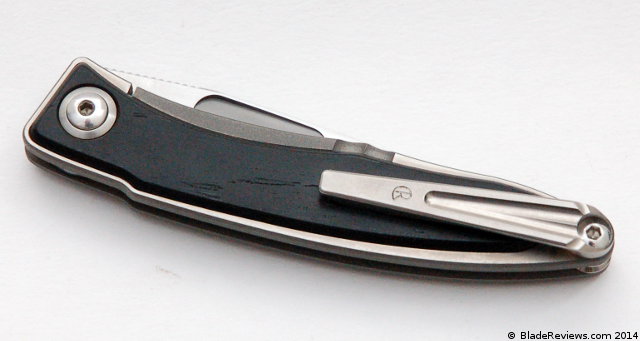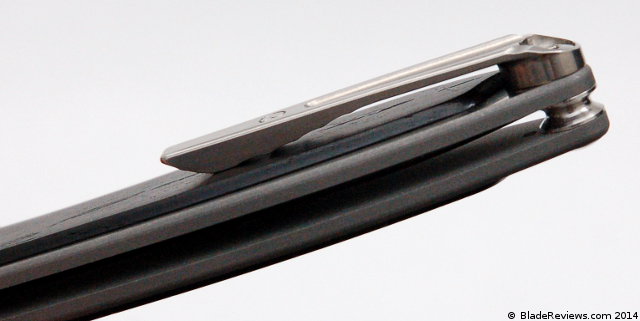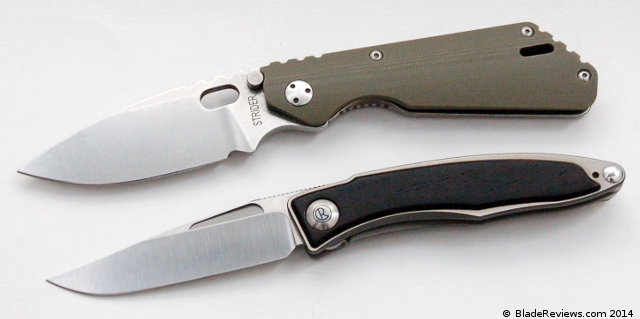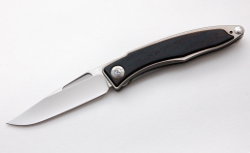Last Updated: July 27, 2019
Especially astute readers may note that I debuted a review of the LionSteel SR-1 a while back, and then published the world’s first review of the TM-1 not so long ago, but I conveniently skipped over the other folder in their SOLID lineup – the Ti-Spine. Rest assured it wasn’t because I wasn’t interested in the TiSpine. It was one of those instances of too many knives, too little time (or money… or both time and money). I am pleased to report that I have finally scrounged up both the time and the money to pen a review of this blade, and I am very excited to be able to do it.
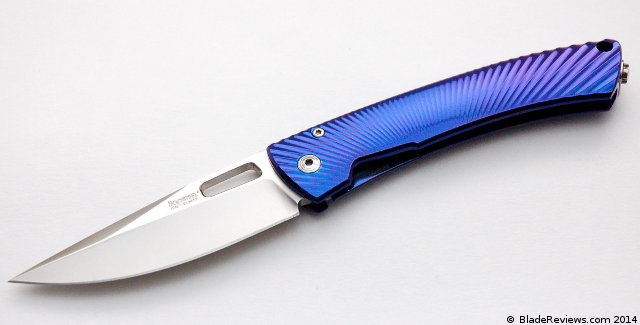
Buy the LionSteel TiSpine at BladeHQ
No products found.
Oddly enough this almost delicate looking knife was designed by globe trotting gonzo reporter Robert Young Pelton, who is perhaps best known in the cutlery world for designing the hard wearing DPx HEST. Thankfully the bottle opener and wire strippers were left out of this model, allowing us to revel in the 4-axis machined goodness of this titanium beauty.
General Dimensions and Blade Details
The Ti-Spine has an overall length of 7.68″, a 3.35″ blade, and weighs 3.5 ounces. Out of the SR-1, TM-1, and TiSpine, the TiSpine is the most EDC friendly of the group. Although the blade is well shy of 3.5″, this knife still feels full sized, and I like how it doesn’t feel overweight. By way of comparison, I found the SR-1 a little ponderous in hand and pocket. The TiSpine is much more of a true EDC option for me. It would also make for a great special occasion / gent’s folder.
The drop point blade on the TiSpine is long and pointy, with a curving belly and potent tip. This classic blade shape has been treated to a high flat grind and swedge. The high flat grind will certainly cut stuff, although I have seen thinner grinds on other folders. My blade has been given a satin finish. It looks nice, although I do wish the transitions between the grinds were a little crisper.
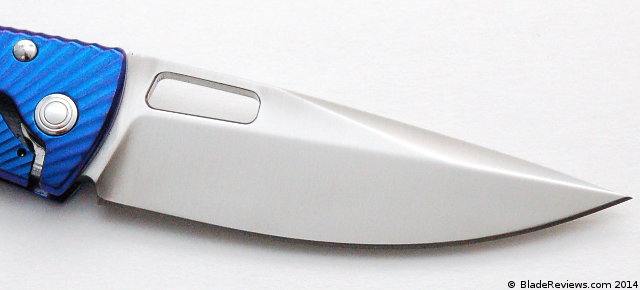
LionSteel went with Elmax stainless steel for their blade material, and it’s a choice that I have seen pop up a few times on their blades. I have found Elmax to be a reliable choice for knife steel. It isn’t too difficult to sharpen, but it still has high hardness (here 59-60HRc) and holds an edge well. No problems with rust or corrosion either. A knife this pretty won’t get a lot of use in my collection, but it’s nice to know that they went with a quality steel.
Handle, Ergonomics, and Pocket Clip
Lets be real: most people will buy this knife for the handle. And what a handle it is. The 4-axis machined handle is so slick that it looks like it was cast from molten titanium. The way the handle catches the light and shimmers along its hundreds of grooves is tough for me to describe. It’s a gem of a handle. In this case, it has been further accentuated by a high polish and brilliant violet anodization.
Compared with the SR-1 it looks like LionSteel has further refined their manufacturing process. Being a monolithic handle, there isn’t much else in the way of hardware, but the pivot and stop pin are custom made and beautifully polished. The only downside to this pretty handle is that it picks up finger prints and scratches very easily. If you are looking for a “user” variant, I might suggest going with one of their less flashy matte finished options.
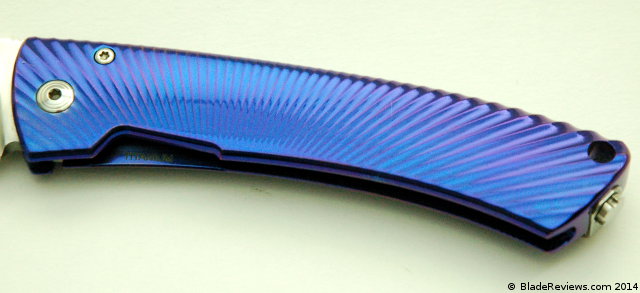
The handle of the TiSpine doesn’t just look good. This is also a comfortable knife. I doubt many will select the TiSpine for a month long trip to the amazon, or use it on a construction site, but this little knife feels good in hand and is capable of getting work done. I broke down boxes and opened mail without any issues. There is a short run of jimping which my thumb tended to pass over, and I found that I put most of my pressure directly on the rounded spine of the blade. Still, I was able to get a comfortable and secure grip on this knife.
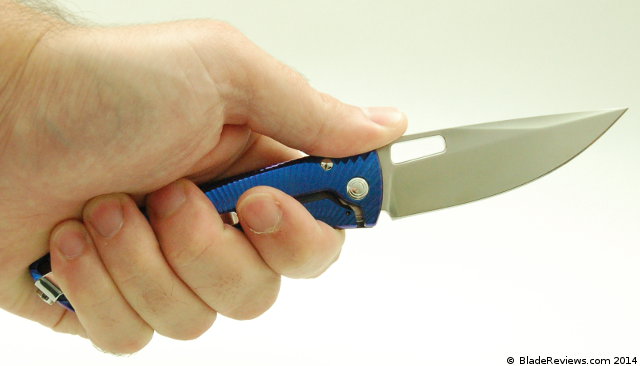
The TiSpine features a long curving deep carry pocket clip. Mine has been given a bright polished finish to match the hardware and accentuate the almost jewelry like quality of the knife. This clip, while large, carries the knife discretely and I am not sure if many people would think you are carrying a pocket knife by looking at the clip alone. It is right side tip up only, but is completely removable if you want to and even more discrete option for carry. In pocket the TiSpine feels nice. It’s slim, flat, and relatively light weight. I had no problem carrying it.
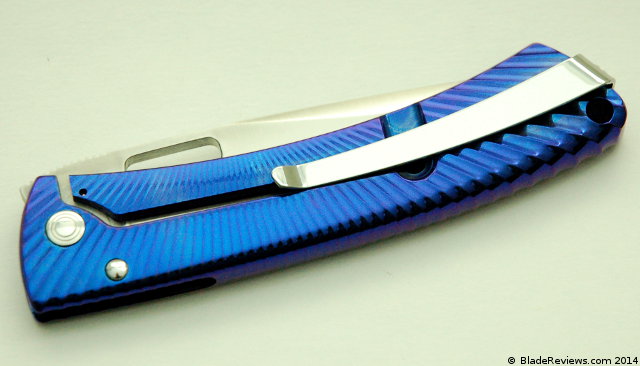
Deployment and Lockup
The TiSpine makes use of an angular thumb hole for deployment. This low profile thumb hole looks great, and matches the sleek styling of the knife, but it is not particularly friendly for lefties. I had some trouble easily opening the blade with one hand, but I know that most people won’t have an issue. Inside there are teflon washers. The action is smooth and the tolerances are tight.
For lock up we have a sturdy titanium framelock. This is a nice titanium frame lock. My knife locks up early, and there is no blade play in any direction or lock stick. The monolithic construction makes for a super solid knife. Blade centering is a little off, but is no where near rubbing. I understand that is a common issue on both the TiSpine and the SR-1.
LionSteel TiSpine Review – Final Thoughts
I am sure many have fallen in love with the TiSpine at first sight. I know I did. I am pleased to report that the knife is even more impressive in person. This is a knife you need to handle to truly appreciate. The design is seductive and the craftsmanship is exceptional. I can find few faults with the TiSpine. I will say it’s not the most lefty-friendly knife. I’d prefer phosphor bronze washers and slightly crisper grinds. Beyond that it’s a beautiful knife and I wouldn’t change a thing. LionSteel has once again shown us that they are a company to be respected, and the sleek look of the TiSpine adds character and depth to their lineup of monolithic knives.
When contemplating the purchase of a TiSpine the real question is whether you are in the market for a high end collectible like this. It wont be to everyone’s taste, but if the TiSpine does appeal to you I definitely recommend it.
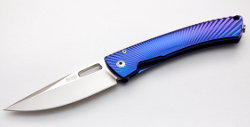
LionSteel TiSpine – From $385.00
From: BladeHQ
No products found.
No products found.
I recommend purchasing the TiSpine at BladeHQ or Amazon. Please consider that purchasing anything through any of the links on this website helps support BladeReviews.com, and keeps the site going. As always, any and all support is greatly appreciated. Thank you very much.
